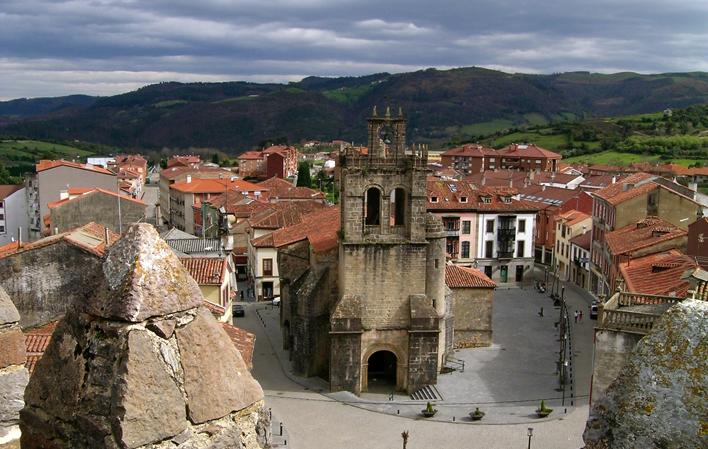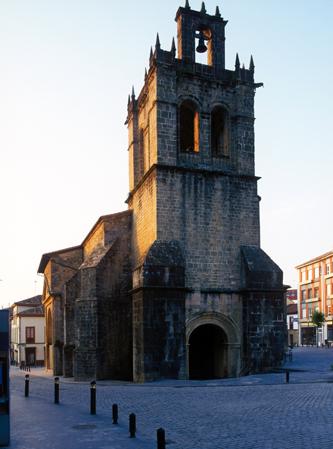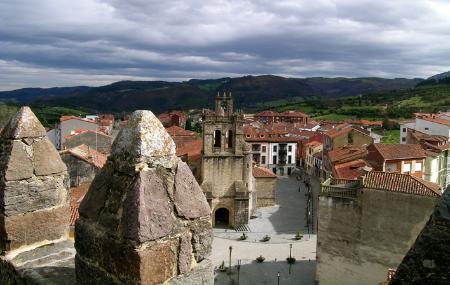
Collegiate Church of Santa María La Mayor
- Title Salas Western Asturias
- Address Address: Plaza del Ayuntamiento ■ 33860 - Salas
- Period Period: Gothic
Info
The church stands imposingly in the centre of the town of Salas, in the heart of the old quarter. It dates back to the 16th century, although other elements were added later, such as the bell tower, the chapels and the portico. The bell tower, located at the foot of the church, has a square floor plan with two buttresses at the corners and a semicircular body attached to it, with a quarter sphere vault.
On the left side of the church, a rectangular projecting body, added in the first half of the 16th century, contains the doorway under a sheltered arch. The doorway, under a pointed arch with a fluted archivolt with rosettes and surrounded by voussoirs, is framed by a Gothic alfiz in the centre of which is a coat of arms.
Inside, the nave is divided into two bays covered with star-shaped vaults, simpler than the one that covers the apse, and the choir or tribune, located at the foot, is raised on a ribbed vault with a carpanel arch.
All the snowfalls start from undecorated corbels, leaving the walls plain. The main altarpiece of the Collegiate Church is attributed to the Toro artist Juan Ducete Díez and his workshop. On the other hand, the altarpiece in the Malleza Chapel is documented as the work of Luis Fernández de la Vega.
Map
Schedules and prices
Visits to the temple can be arranged through the Salas Town Hall Tourist Office.


